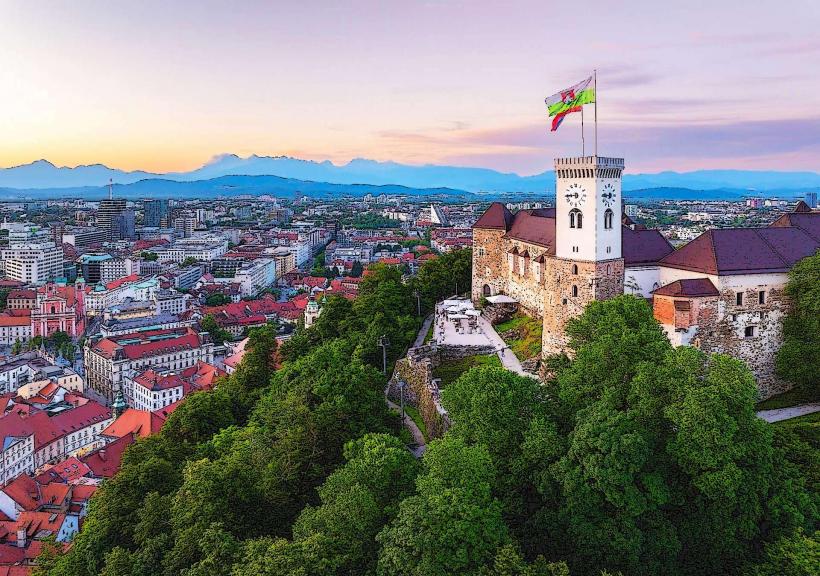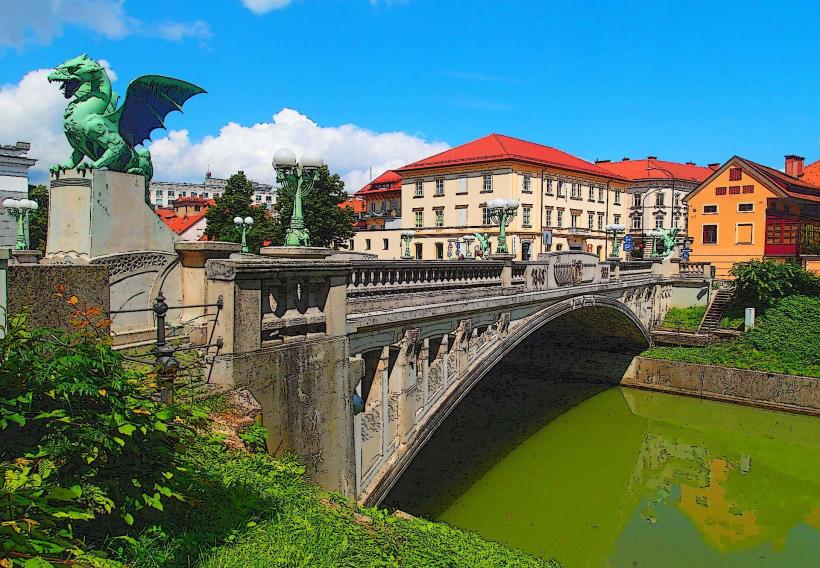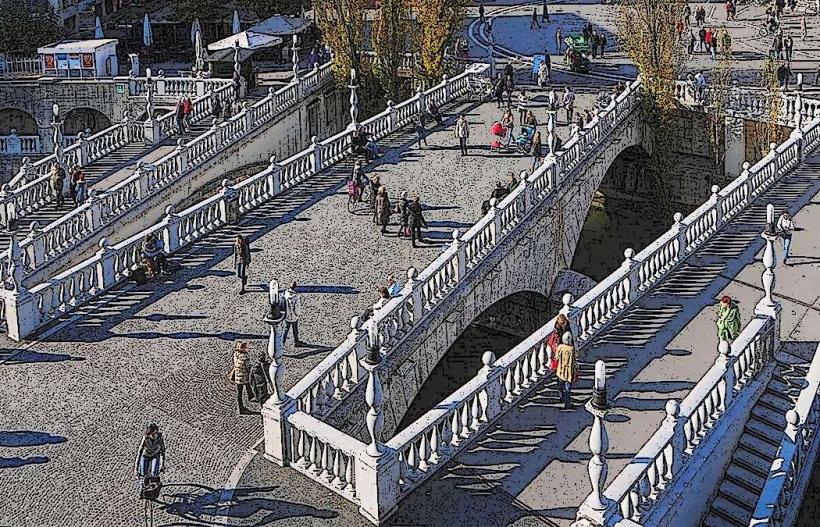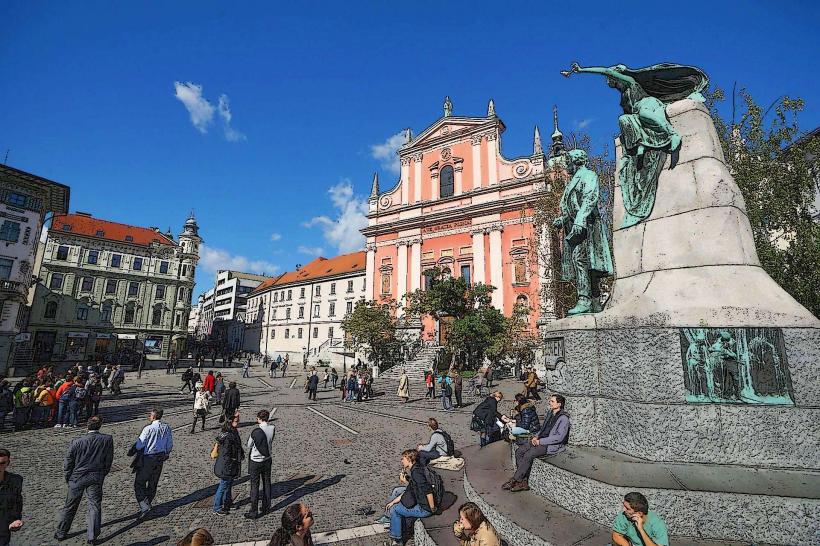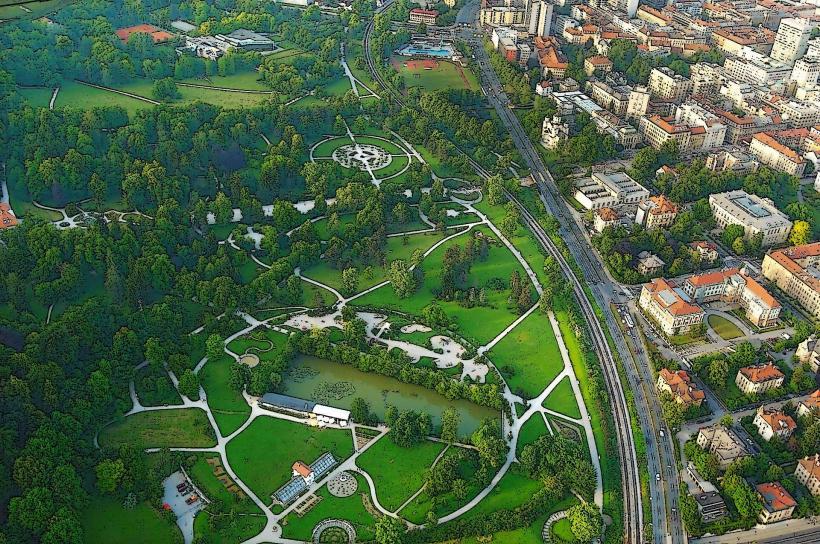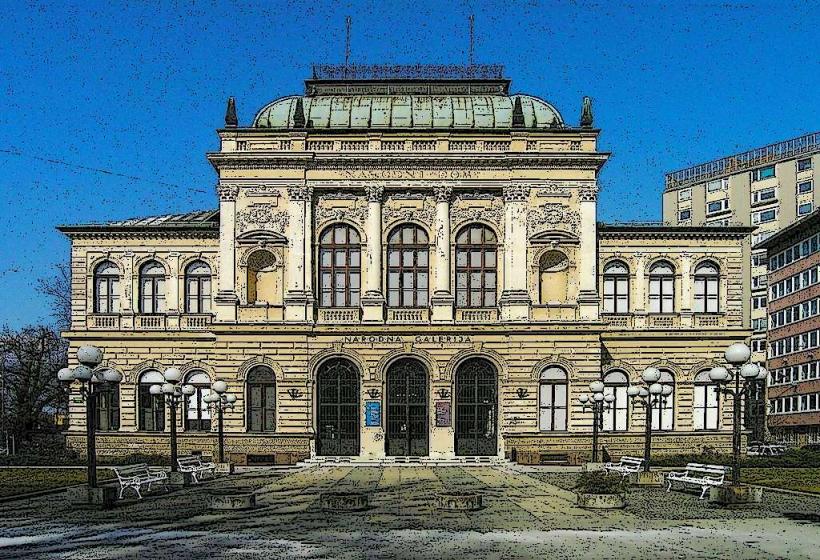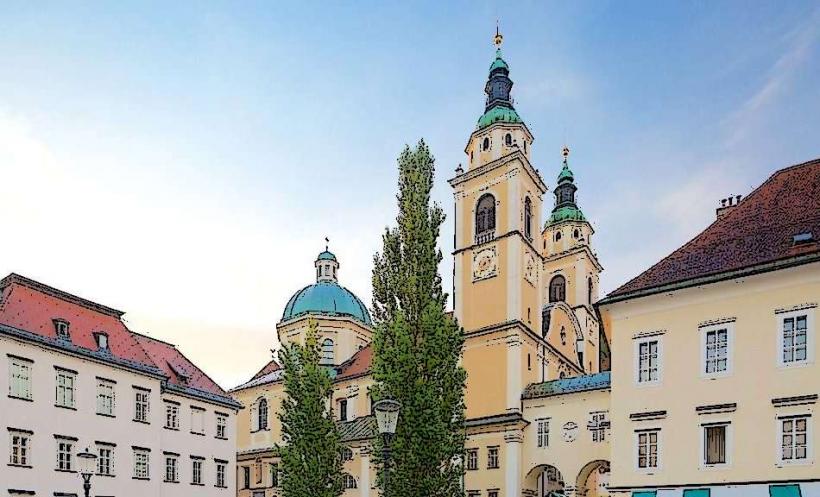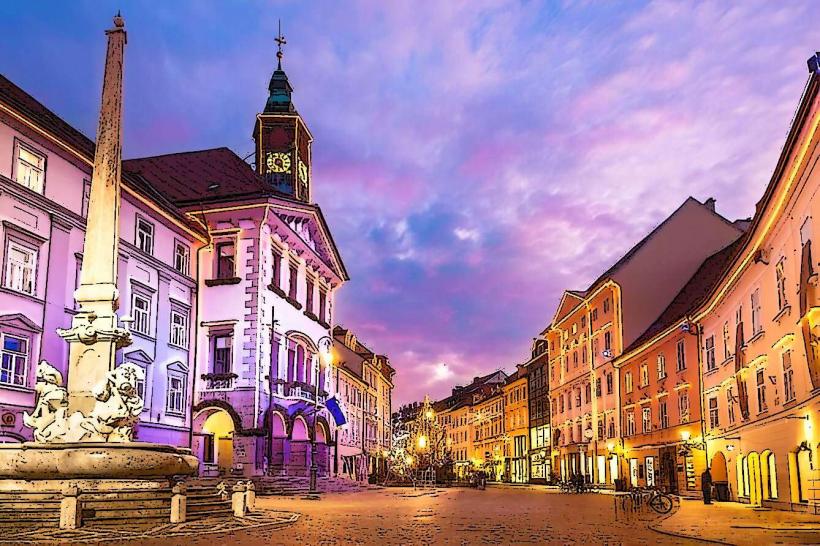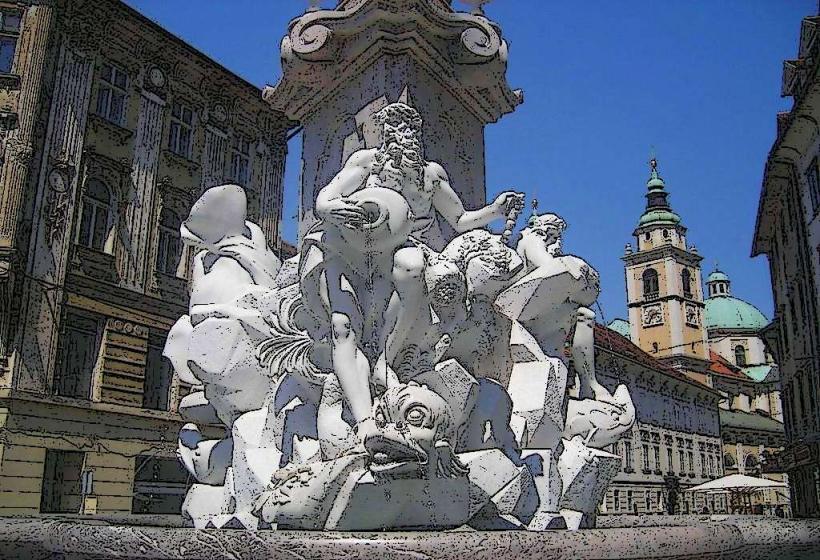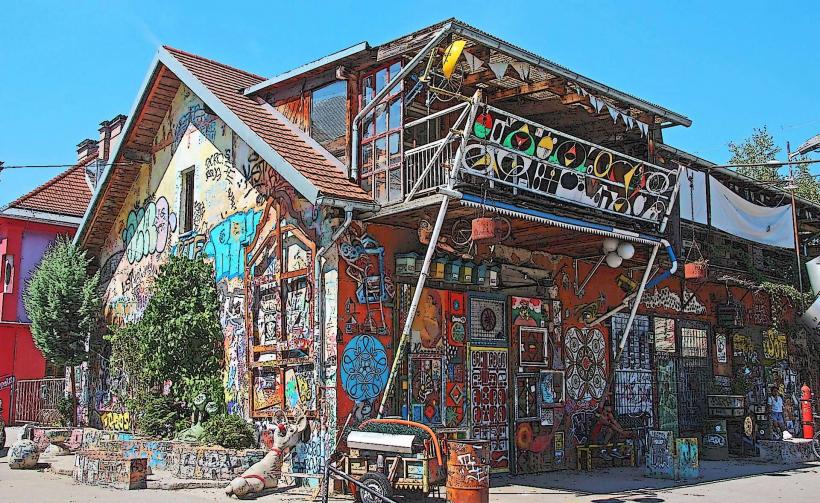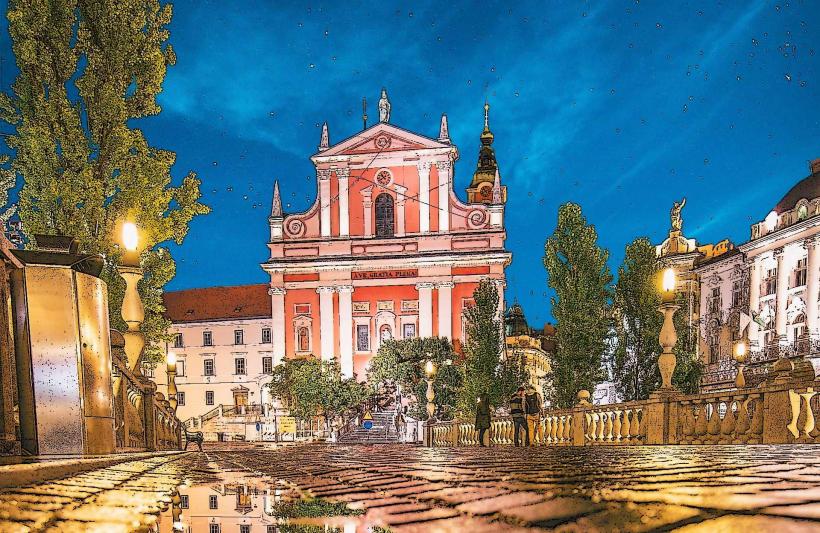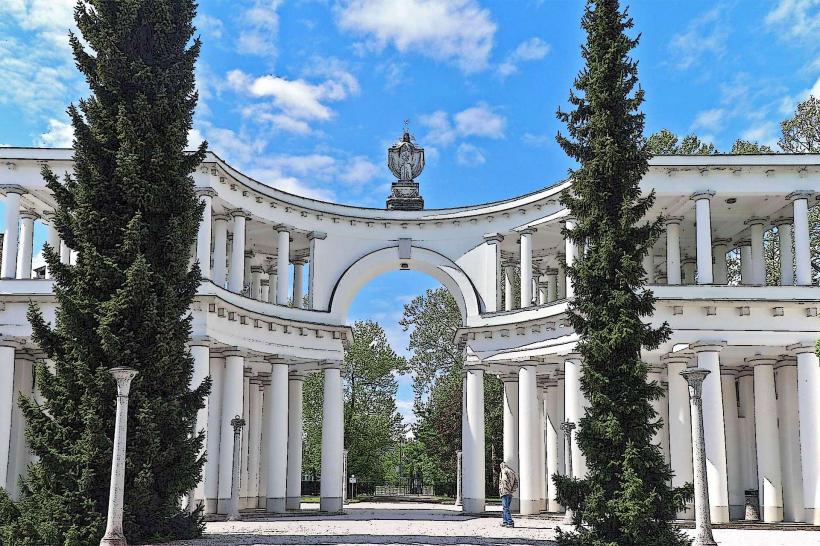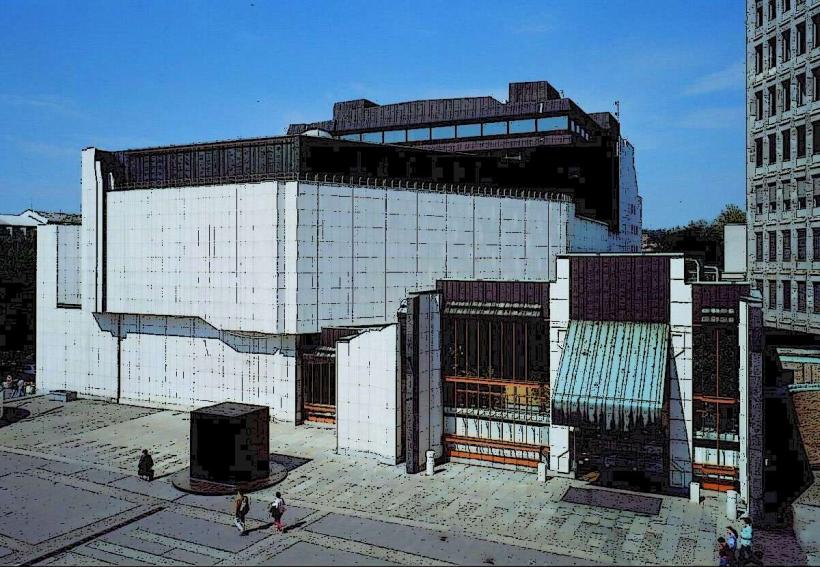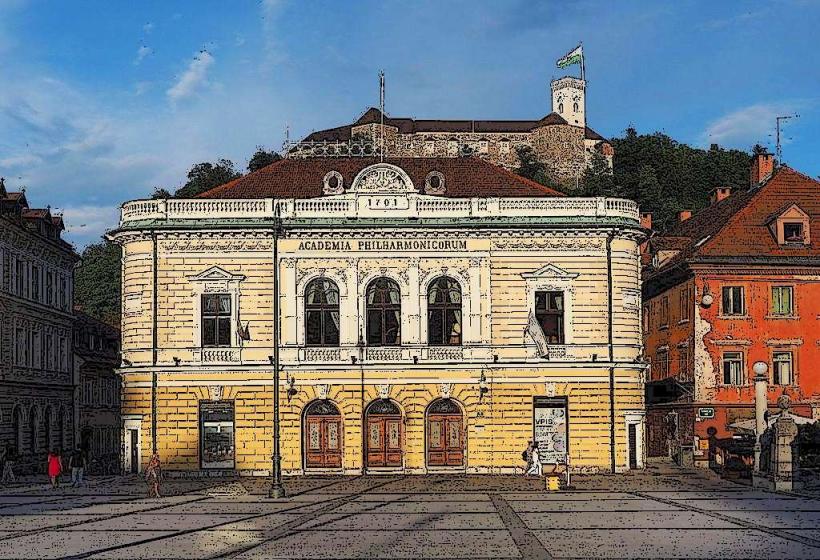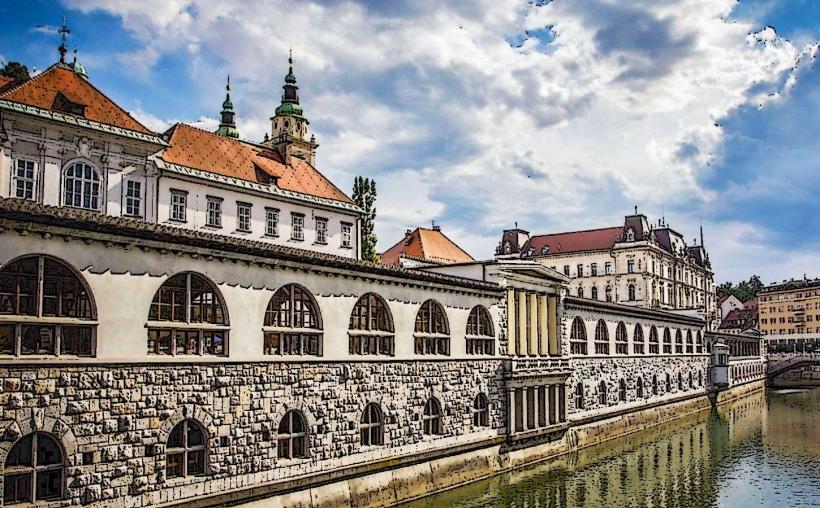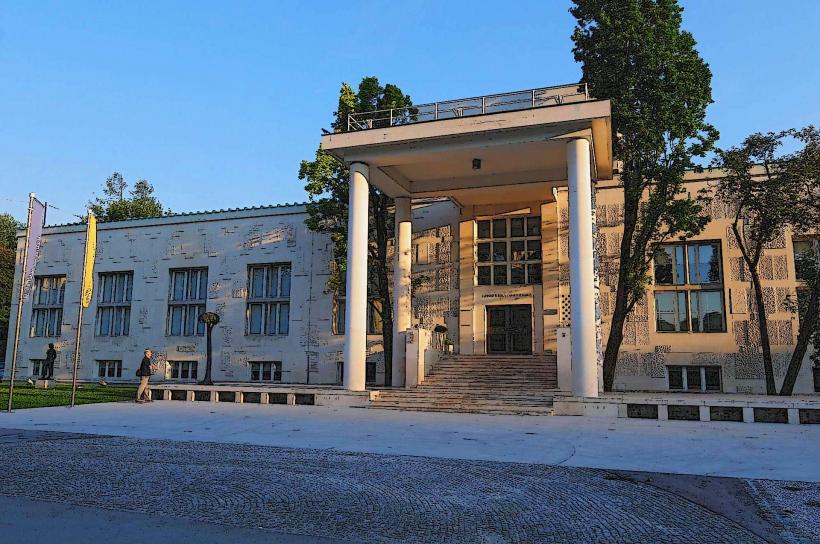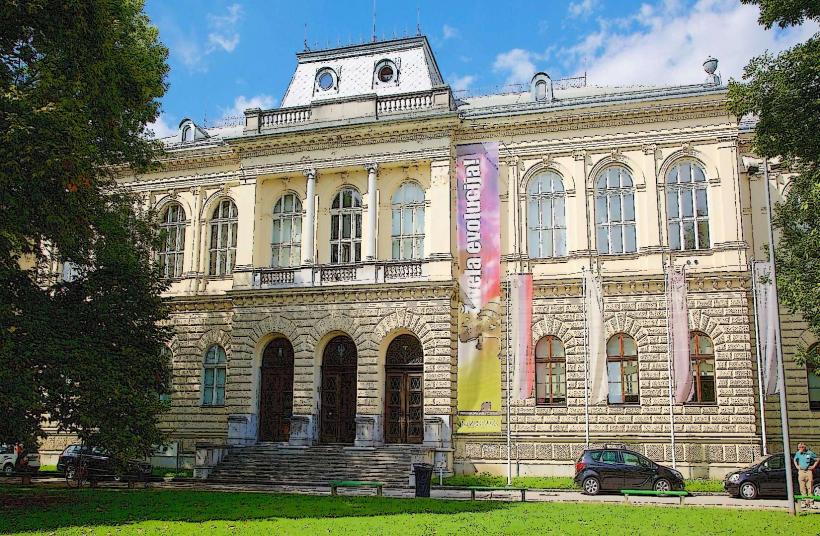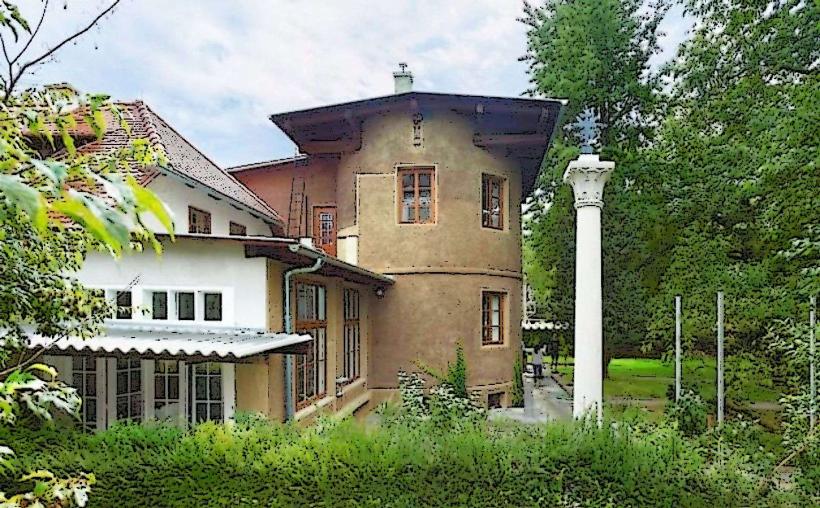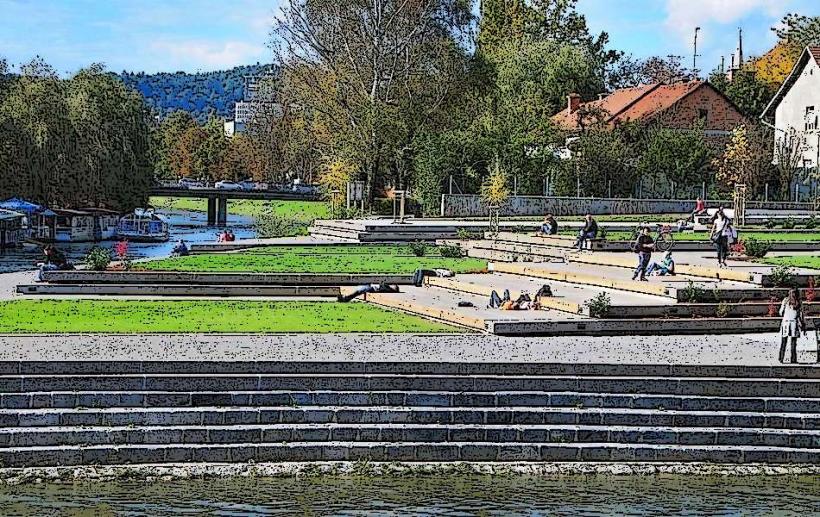Information
Landmark: Butchers' BridgeCity: Ljubljana
Country: Slovenia
Continent: Europe
Butchers' Bridge (Slovene: Mesarski Most) is a modern pedestrian bridge in Ljubljana, Slovenia, known for its distinctive design and symbolic connection to the city's history. The bridge spans the Ljubljanica River, linking Petkovškovo nabrežje on the right bank with the Trnovo district on the left bank. The bridge is named after the butchers' shops that once stood in the area during the medieval period. Today, it is a popular landmark, combining architectural innovation with historical significance.
General Overview
- Name: Butchers' Bridge (Mesarski Most)
- Location: The bridge spans the Ljubljanica River, connecting the Petkovškovo nabrežje area with the Trnovo district.
- Type: Pedestrian bridge, modern design.
- Construction: The bridge was completed in 2010, making it one of the newer architectural landmarks in the city.
History and Naming
Historical Significance: The bridge takes its name from the butchers' district of Ljubljana, a historical area where the city's butchers operated in the Middle Ages. The area near the bridge was known for its meat markets, and the nearby Butchers’ Alley (Mesnička ulica) continues to evoke this connection to the city's past.
Modern Construction: Although the area has long been associated with the meat trade, the Butchers' Bridge itself is a modern structure, built to serve the increasing pedestrian traffic in the city center and enhance the urban landscape. Construction began in 2008, and the bridge was completed in 2010.
Architecture and Design
Designer: The bridge was designed by the architect Jurij Sadar of the architectural firm Sadar Vuga. It is part of the city’s initiative to revitalize the Ljubljana waterfront and improve the connections between different parts of the old town.
Materials: The bridge is made from steel and glass, with a sleek, modern design that contrasts with the older, traditional architecture in the surrounding area. Its minimalist yet sophisticated appearance is a striking feature in Ljubljana’s historical center.
Shape and Structure: The Butchers' Bridge features a suspension structure with a curved, organic shape that complements the natural contours of the river. It is flat and wide, offering a comfortable space for pedestrians to cross. The bridge is about 30 meters long and 7 meters wide, making it an important connector for foot traffic.
Glass Panels and Sculptures: One of the standout features of the Butchers' Bridge is the glass panels embedded in the bridge’s surface. These panels are etched with various sculptural elements, including depictions of animals, which tie into the bridge’s historical reference to the butchers’ trade. These glass etchings are meant to represent the link between Ljubljana's history and its modern-day life.
Statues: The bridge is also notable for its artistic touch, as it is adorned with bronze statues of four human figures, which were designed by the sculptor Jakov Brdar. These statues depict nude human figures in various poses, symbolizing the theme of human connection and the passage of time. The statues are situated on the bridge’s railings, adding a contemporary artistic flair to the structure.
Symbolism and Concept
Connection Between Old and New: The Butchers' Bridge represents the fusion of the historical and the modern. It draws from Ljubljana's medieval past, referencing the butchers' district, while using contemporary materials and artistic elements to symbolize the city’s evolution.
Cultural Significance: The bridge has also become a symbol of Ljubljana’s open, welcoming spirit, offering a public space that connects diverse areas of the city. It reflects the city’s commitment to enhancing pedestrian access, promoting urban renewal, and preserving the cultural heritage through architectural design.
Artistic and Social Role: The inclusion of sculptures and glass etchings ties the bridge to Ljubljana's growing recognition as a cultural and artistic hub. The statues, in particular, invite reflection on human connection, body, and form, offering more than just a functional crossing over the river.
Visitor Experience
Accessibility: The Butchers' Bridge is a pedestrian-only bridge, making it ideal for leisurely strolls along the river. It provides easy access for both locals and tourists, linking the central Old Town with more contemporary areas of Ljubljana.
Views and Photography: The bridge offers fantastic views of the Ljubljanica River and the surrounding historic buildings. It is a popular spot for photographers, offering an opportunity to capture both the modern bridge design and the older, charming architecture of the city center.
Pedestrian Bridge: As a pedestrian bridge, it enhances the walking experience in Ljubljana, providing both a functional and aesthetic route for people to cross the river while enjoying the surrounding views.
Popular Spot for Tourists: The Butchers' Bridge has become a must-see for visitors to Ljubljana, not only for its architectural beauty but also for its unique artistic elements. Many visitors take the time to admire the bronze sculptures, glass panels, and the bridge’s modern design while walking across it.
Conclusion
The Butchers' Bridge stands as a modern architectural gem that blends functionality with artistic expression in the heart of Ljubljana. Its design reflects the city's commitment to preserving its cultural heritage while embracing innovative and contemporary architecture. As a symbol of the connection between the city's past and present, the bridge has become a prominent landmark and a popular destination for both locals and tourists alike. Whether for its sculptures, its glass panels, or its stunning views of the river, the Butchers' Bridge offers a unique experience for all who visit.

